Potřebujeme váš souhlas k využití jednotlivých dat, aby se vám mimo jiné mohly ukazovat informace týkající se vašich zájmů. Souhlas udělíte kliknutím na tlačítko „OK“.
ASTM D5731-08
Standard Test Method for Determination of the Point Load Strength Index of Rock and Application to Rock Strength Classifications
Automaticky přeložený název:
Standardní zkušební metoda pro stanovení bodu zatížení Strength Index Rock a aplikace na pevnost hornin Třídění
NORMA vydána dne 1.1.2008
Informace o normě:
Označení normy: ASTM D5731-08
Poznámka: NEPLATNÁ
Datum vydání normy: 1.1.2008
Kód zboží: NS-32318
Počet stran: 12
Přibližná hmotnost: 36 g (0.08 liber)
Země: Americká technická norma
Kategorie: Technické normy ASTM
Kategorie - podobné normy:
Zemní práce. Hloubicí práce. Budování základů. Podzemní práce
Anotace textu normy ASTM D5731-08 :
Keywords:
compressive strength, index test, point load, rock, rock classification, Compression testing--rock/related materials, Index test, Point load strength test, Rock materials/properties/analysis, ICS Number Code 93.020 (Earth works. Excavations. Foundation construction. Underground works)
Doplňující informace
| Significance and Use | ||||||||||||||||||
|
The uniaxial compression test (see Test Method D 7012) is used to determine compressive strength of rock specimens. However, it is a time-consuming and expensive test that requires significant specimen preparation and the results may not be available for a long time after the samples are collected. When extensive testing and/or timely information is required for preliminary and reconnaissance information, alternative tests such as the point load test can be used to reduce the time and cost of compressive strength tests, when used in the field. Such data can be used to make timely and more informed decisions during the exploration phases and more efficient and cost effective selection of samples for more precise and expensive laboratory tests. The point load strength test is used as an index test for strength classification of rock materials. The test results should not be used for design or analytical purposes. This test method is performed to determine the point load strength index of rock specimens and, if required, the point load strength anisotropy index. Rock specimens in the form of either core (the diametral and axial tests), cut blocks (the block test), or irregular lumps (the irregular lump test) are tested by application of concentrated load through a pair of truncated, conical platens. Little or no specimen preparation is required and can therefore be tested shortly after being obtained and any influence of moisture condition on the test data minimized. However, the results can be highly influenced by how the specimen is treated from the time it is obtained until the time it is tested. Therefore, it may be necessary to handle specimens in accordance with Practice D 5079 and to document moisture conditions in some manner in the data collection. Note 1—The quality of the result produced by this standard is dependent upon the competence of the personnel performing it, and the suitability of the equipment and facilities used. Agencies that meet the criteria of Practice D 3740 are generally considered capable of competent and objective testing and sampling. Users of this standard are cautioned that compliance with Practice D 3740 does not in itself assure reliable results. Reliable results depend on many factors; Practice D 3740 provides a means of evaluating some of those factors. |
||||||||||||||||||
| 1. Scope | ||||||||||||||||||
|
1.1 This test method covers the guidelines, requirements, and procedures for determining the point load strength index of rock. This is an index test and is intended to be used to classify rock strength. 1.2 Specimens in the form of rock cores, blocks, or irregular lumps with a test diameter from 30 to 85 mm can be tested by this test method. 1.3 This test method can be performed in either the field or laboratory. The test is typically used in the field because the testing machine is portable, little or minimal specimen preparation is required, and specimens can be tested within a short time frame of being collected. 1.4 This test method applies to medium strength rock (compressive strength over 15 MPa (2200 psi)). 1.5 This test method does not cover which type of specimen should be tested or whether anisotropic factors should be considered. The specifics of the point load test program need to be developed prior to testing and possibly even before sampling. Such specifics would be dependent on the intended use of the data, as well as possible budgetary constraints and possible other factors, which are outside the scope of this test method. 1.6 All observed and calculated values shall conform to the guidelines for significant digits and rounding established in Practice D 6026. 1.7 The method used to specify how data are collected, calculated, or recorded in this standard is not directly related to the accuracy to which the data can be applied in design or other uses, or both. How one applies the results obtained using this standard is beyond its scope. 1.8 The values stated in the SI units are to be regarded as standard. 1.9 This standard does not purport to address all of the safety concerns, if any, associated with its use. It is the responsibility of the user of this standard to establish appropriate safety and health practices and determine the applicability of regulatory limitations prior to use. |
||||||||||||||||||
| 2. Referenced Documents | ||||||||||||||||||
|
Podobné normy:
Historická
1.11.2013
Historická
1.1.2008
Historická
1.3.2014
Historická
1.7.2008
Historická
1.8.2012
Historická
15.1.2010


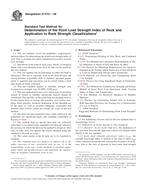
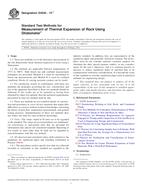 ASTM D4535-13e1
ASTM D4535-13e1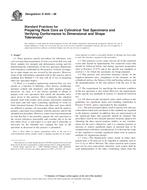 ASTM D4543-08
ASTM D4543-08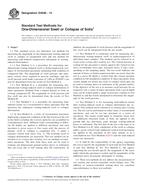 ASTM D4546-14
ASTM D4546-14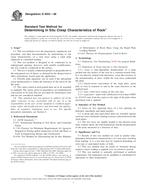 ASTM D4553-08
ASTM D4553-08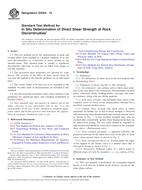 ASTM D4554-12
ASTM D4554-12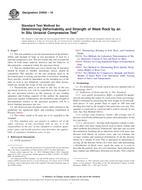 ASTM D4555-10
ASTM D4555-10
 Cookies
Cookies
